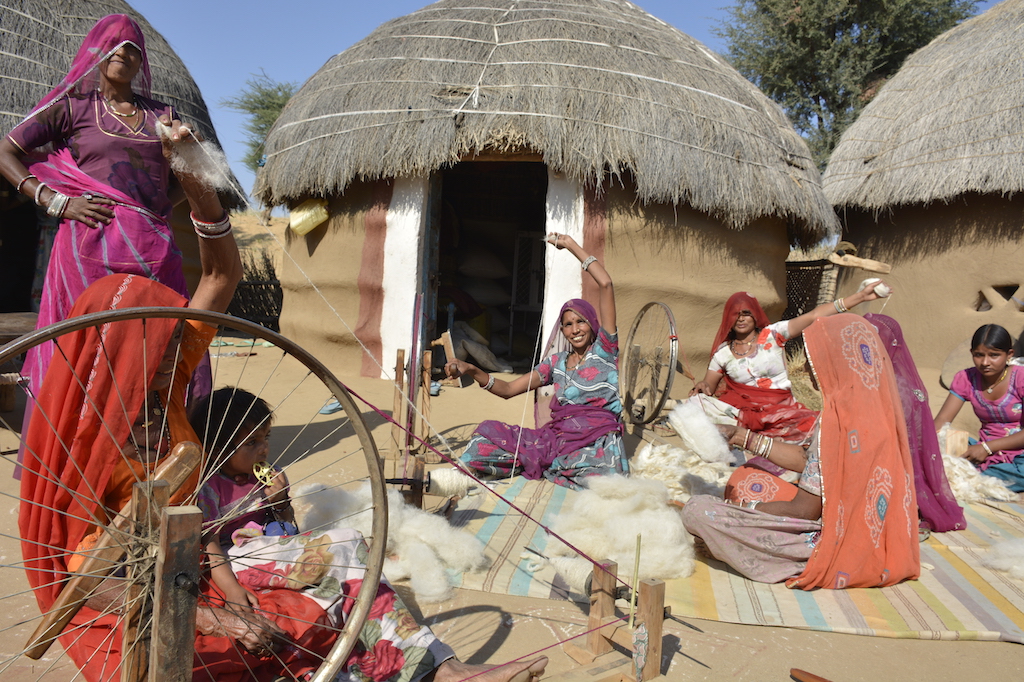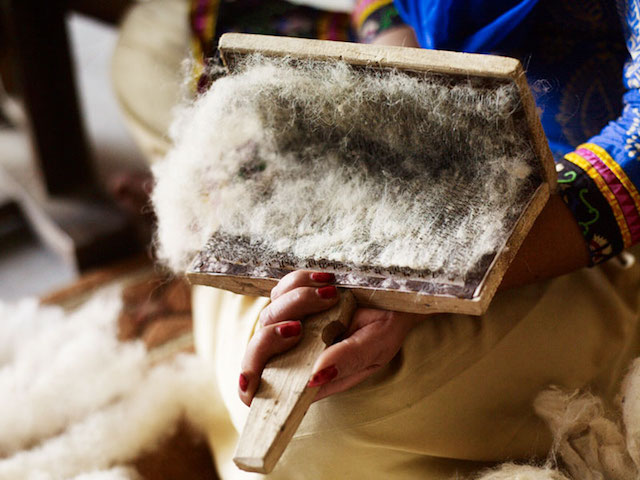CRAFTMANSHIP
The craftsmanship behind hand knotted rug is merging modern design and materials with ancient techniques passed down through generations. Our beautiful rugs are created in Jaipur, India, using only the very best artisan weavers.
The entire manufacturing process is entirely carried out by hand, starting from the yarn spinning to the dyeing of colors and finally the manual process of binding and knotting of the rug.
rug making journey
1. Selection of Raw Material
The process of making the rug begins with choosing the raw material, that is done by shearing the sheep and obtaining the wool.
2. Carding
Carding process includes combing or straightening out the fibers and removing the trash and tangles so that the spinner can get a yarn of consistent thickness.
3. Spinning
After carding, the fibres of wool are twisted to form yarn. Traditionally, the women spin the wool fibers by hand using simple tools like the spinning wheel.
4. Dyeing
Once the wool has been spun to obtain yarn, it can be dyed either by synthetic dyes or natural dyes. Natural dyes uses natural plants, flowers, some insects or root plants.
5. Weaving
The raw material is rolled to make balls so that weavers can easily tie knots. A graph of the carpet design will act as a guideline for the weaver, as it determines the position of each knot and colour.
6. Clipping
Once the rug is finished it will be taken off from the loom. The pile will then be trimmed using special scissors.
7. Washing
After trimmed, the rug is washed with water by using household cleaners to remove germs particles and impurities. The rug is then dried out in the sun for 4-5 days.
8. Binding
This is the final stage and involves wrapping the sides of the rug in a yarn of the same colour. The rug is then completed and ready to be sent.









